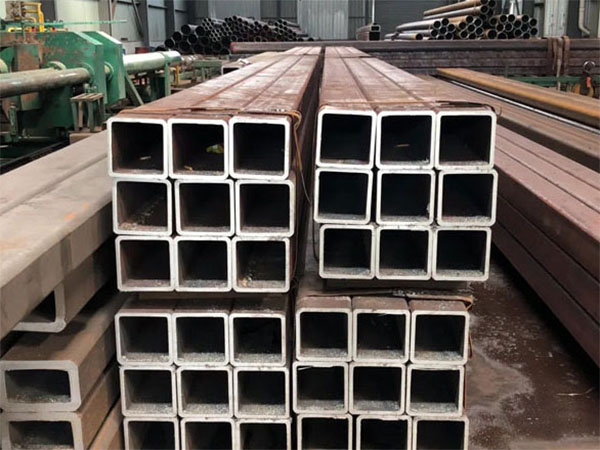Square tubes are steel pipes with typical hollow square cross-sections made from steel billets or steel strips through rolling or welding. They are also known as hollow profiles or structural square tubes. Due to their high strength and durability, they are widely used in structural load-bearing, manufacturing, and decoration fields.
The manufacturing of square tubes can be divided into two major categories: seamless manufacturing and welded manufacturing. Depending on the different manufacturing methods, the properties exhibited by square tubes also vary. Its raw material mainly adopts carbon steel with a carbon content of approximately 0.05% to 2.1%. The cross-sectional shape is square and the interior is hollow. The safe cross-section brings excellent bending and torsional resistance performance, and has the advantages of high strength and light weight. Common standards include ASTM A500 (cold-formed welding/seamless structure grade), ASTM A513 (mechanical grade, ERW welding), etc.

Seamless manufacturing
1. Material preparation: Select high-quality steel billets, clean, decontaminate and dry them, and heat the clean steel billets to an appropriate temperature for the next process.
2. Piercing extrusion: The heated billet is punched with a piercing rod or roller to form a hollow billet tube.
3. Preliminary rolling and elongation: The outer diameter and wall thickness of the billet are reduced through the rolling mill to produce the master tube.
4. Hot rolling and cold rolling adjustment: The size of the tube billet is adjusted through hot rolling to make it approach the requirements, and cold rolling/cold drawing is used to improve dimensional accuracy and surface quality. If high precision is required, multiple rounds of cold drawing can be carried out, combined with intermediate annealing.
5. Processing into square cross-section: The circular tube blank is transformed into a square shape through cold bending, rolling or hydraulic forming. The uniformity of the cross-section can be ensured through CNC rolling equipment.
6. Heat treatment: Annealing, normalizing, quenching or tempering to optimize mechanical properties and eliminate internal stress.
7. Straightening, cutting and surface treatment: Use a straightening machine to adjust the straightness, and perform cutting, acid washing, phosphating, painting, galvanizing and other treatments on the finished products to enhance the anti-corrosion performance and appearance quality of the steel pipes.
8. Quality inspection and packaging: Conduct appearance and size inspection, ultrasonic/radiographic testing, hydrostatic testing, etc. After passing the inspection, mark (size, grade, furnace number) and package for shipment.
Welding manufacturing
1. Raw material preparation: Usually, steel coils or plates are used. After being leveled by an uncoiler, they enter the production line.
2. Forming: The sheet is gradually bent from a flat plate into a tubular shape through a forming roller conveyor, and then formed into a square cross-section by forming equipment.
3. Welding: The seal is welded by high-frequency resistance welding (ERW/HFW) or submerged arc welding (SAW), and the inner and outer surfaces of the weld seam are ground smooth.
4. Straightening and shaping: The tube shape is corrected through the shaping roller to ensure the cross-sectional accuracy and straightness.
5. Cutting and preliminary treatment: The steel pipes are cut to the specified dimensions and undergo surface pretreatment such as acid washing, phosphating, and oiling.
6. Cold drawing: For high-precision requirements, cold drawing can be carried out on welded nozzles to enhance dimensional accuracy and surface quality.
7. Heat treatment: Annealing or normalizing the welded parts is carried out to enhance their stability and performance in use.
8. Surface treatment, inspection and packaging: After completing painting, galvanizing, ultrasonic/radiographic testing, hydrostatic testing, chamfering of cutting edges, and application of anti-rust oil, marking, packaging and shipping are carried out.
Summary
Seamless and welded are the two main routes for manufacturing square tubes. Seamless pipes are suitable for occasions with high requirements for strength and precision, while welded pipes have more advantages in terms of cost and efficiency. Both will go through key links such as heating, molding, correction, surface treatment and quality inspection. The choice depends on the product performance target, budget and application environment.
